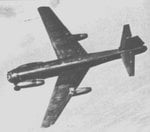A
Anonymous
Guest
DerAdlerIstGelandet said:I will agree with you that the V-1 and V-2 took up needless time and effort and Hitler was stuck on having his vengence weapons. So I will agree with you that Germanys desisions did hurt the Jet projects. I will also agree with you that US industy was larger. And if you look at the fact that the Germans were working on jet engines in 1936 then yes I would agree that time was not a factor, however what I meant by German scientists not having time is that basically politics put a time limit on how long it took for them to put out a working product. They did not have the sufficient time to put out better products. In the latter parts of the war Germany was putting out inovative designs that just were not quite ready yet and that was because Hitler wanted them in the air immediatly. Now if they had had sufficient time would these products have helped their war effort? Probably not. I do however think that given sufficient time they could have turned out aircraft of great value as you said like a Mig-15 type of aircraft. For example just look at the Ho-229.
Well, I think it is true that the engineers and scientists of all sides were under great pressure to make accomplishments quickly. The stress upon the Manhatten project team was increadible. Nervous breakdowns and heart-attacks were not uncommon on all sides.
What amazes me however, is the degree to which inter-service politics were allowed to hurt both the German and Japanese war efforts. For example, in about 1941 or so Von Braun's team had developed a very nice system for launching rocket bombardments from U-Boats. However the German Navy rejected this as it was an "Army project". These bombardments, directed against key US and British ports and shipyards, could have had a significant impact on the Allied war effort.
Likewise, in several instances the IJN refused to cooperate with the IJA. If such things had happened to such a significant degree with the British or American forces, heads would have rolled quickly. Can you imagine if the USN had refused to conduct the Doolittle raid because it was an Army operation?
=S=
Lunatic



